|
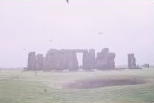
Stonehenge stands on the open down land
of Salisbury Plain two miles west of the town of
Amesbury, Wiltshire, in Southern England. |
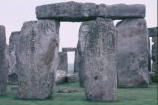
It
consists of a series of earth, timber, and stone structures that were
revised and re-modeled over a period of more than 1400 years. |
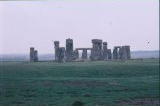
The earliest portion dates to approximately
2950-2900 BCE (Middle Neolithic). It is comprised of a circular bank, ditch,
and counter bank of about 330 feet in diameter. |
|
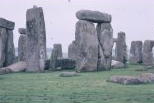
Until 2400 BCE, post holes indicate timber
settings in the center of the monument and at the north-eastern entrance. |
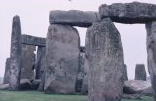
The Trilithons are ten upright stones arranged
as five freestanding pairs each with a single horizontal lintel. Three of five Trilithons are complete
with their lintels. The others both have only one standing stone with
the second stone and lintel lying on the ground. |
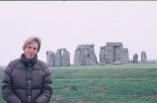 They were erected in the form of a horseshoe with
the open side facing north-east toward the main entrance of the monument.
Certainly, one is left with a sense of deep mystery.
They were erected in the form of a horseshoe with
the open side facing north-east toward the main entrance of the monument.
Certainly, one is left with a sense of deep mystery. |